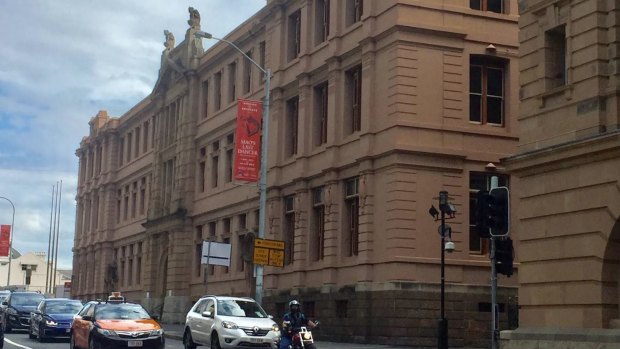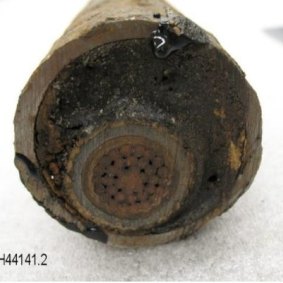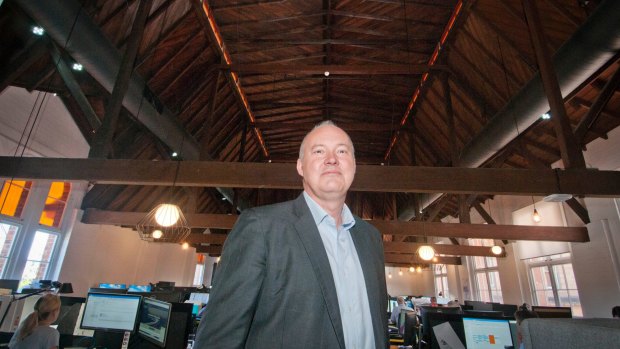This was published 7 years ago
Brisbane's electric past exposed in casino digging
By Tony Moore
Brisbane’s direct link to the inventor of the electrical light bulb, Thomas Edison, will be exposed on Tuesday morning.
Some of the first electrical cables installed in the city will be removed from the Queen's Wharf construction site on Tuesday as work to build Brisbane’s new casino and resort complex pushes ahead.

The first building in Queensland to use electricity was the old Government Printing Office in George Street. Credit: Tony Moore
The 134-year-old cables, known as the Edison "street tubes", were designed by Edison and built by his US-based Thomas Edison Company.
These early electricity cables are an iron and copper pipe with wire, paraffin and beeswax inside.
Edison held more than 1000 patents and is today recognised as the inventor of the electric light bulb, the phonograph and the motion picture camera.
Brisbane, New York and London were the early pioneers of using electricity in public spaces.
In 1883, the first practical use for electricity was to power the Queensland government’s Printing Office, where the daily Hansard was printed. That is regarded as one of Australia’s earliest industrial uses of electricity.

An Edison street tube found at Queens Wharf.
The Government Printing Office in George Street was the first building in Queensland to have electricity.
That came just after eight “arc” lights were powered in early Queen Street in 1882 as a demonstration.
However, after electricity powered lighting at the early Roma Street rail yards, electricity cables in 1884 were laid to connect the Government Printing Office, adjacent to the now demolished Executive Building, down to Parliament House near the Botanic Gardens at the end of George Street.
Queensland Museum records show the original electricity cables from 1884 were discovered by SEQEB (the precursor to Energex) workers more than 100 years later in 1992.
Today, the remaining century-old electricity cables in William Street will be carefully excavated by the Queen's Wharf construction crews.
They will probably be given to the Queensland Museum, or Energex, but could eventually go on display on-site.
As the Queensland Museum records show: “This is part of the return line to the power station and has a single conductor, comprised of approximately 37 copper strands.”
“The conduit has a severely rusted cast iron casing, with the pitch, made of asphaltum, oxidised linseed oil, paraffin and beeswax, slowly seeping from either end of conduit.”
By 1892, a more complex “three-core” electrical conduit was used to expand Brisbane’s electrical network along Alice Street, where some of the city’s finest houses and the still-remaining Queensland Club were built from 1882.
Archaeologists, the Royal Historical Society Queensland and Destination Brisbane project director Simon Crooks will be on-site Tuesday morning as the careful excavation begins.
A Destination Brisbane spokesman said the fact the Government Printing Office was the first building in Queensland to use electricity would not be lost as the development took shape.

Queens Wharf project manager Simon Crooks inside the old Government Printing Office, which houses Star's project offices.Credit: Robert Shakespeare
“There was an old steam public generator built out the back of the Government Printing Office near where the Public Services Club is and they ran cables from that to Parliament House,” the spokesman said.
He said because excavation was about to start along William Street, the century-plus-old cables need to be carefully removed.